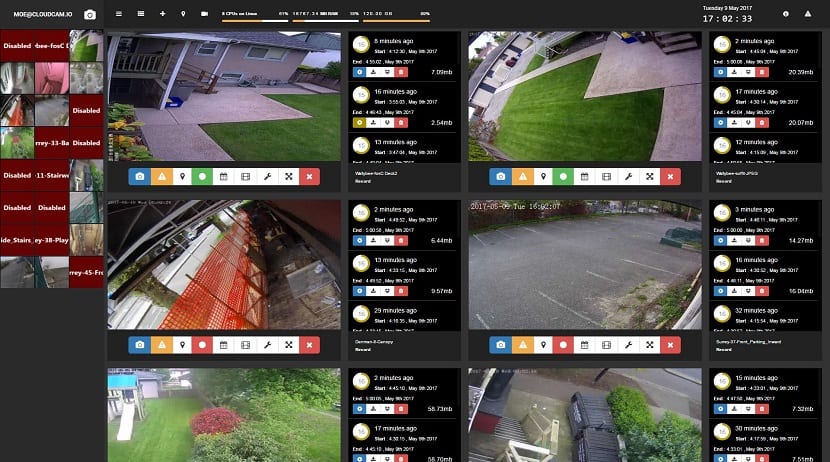
ShinobiCCTV is an Open Source video surveillance server, written in Node.js, and very easy to use. This project would be the reference alternative to ZoneMinder.
What could become, in fact, given the limited choice in this free ecosystem. "Shishi" is based on FFmpeg and Node.js, and uses JavaScript, a bit of Python, and a shell shouia massively.
The server is cross-platform (BSD, Linux, macOS, Windows) and compatible with the ARM architecture plus it also has an image in Docker.
In terms of functionality, ShinobiCCTV is somewhere between ZoneMinder (usable in a professional and old environment) and Kerberos.io.
Shinobi is divided into two distinct branches:
Shinobi Community Edition which is a free license version.
Shinobi Pro, which even though the project is open Source is not free (paid, except exceptions).
We are going here, of course, to focus only on the free version.
Unlike the Pro version, Shinobi Community Edition (the free version of Shinobi) does not receive regular updates and does not accept any integration request or pull request.
Shinobi Features
This video surveillance server has the ability to retrieve video and audio streams from cameras via HTTP, RTP / RTSP and ONVIF, HTTPS is supported, but only with valid X.509 certificates;
Recording is done in video formats compatible with hardware acceleration, with three different recording modes (continuous recording, recording during buffered or unbuffered events, recording and then deleting if no event is detected).
Shinobi cluster mode is based on the master-slave system, which allows the load to be distributed, but does not have high availability; only the master server deals with communication with the database, if this server fails, all plants.
In the WEBUI you can adapt your control panel by dragging and dropping the different monitors of the camera.
Of the characteristics that are worth mentioning we find:
- Possible audio recording.
- Motion detection and pattern analysis.
- Variety of recording formats.
- Diversity in dissemination methods.
- Remote storage management (Amazon S3, WebDAV, Backblaze B2).
- Possibility to define the storage for each camera.
- Management of a small part of the camera controls (PTZ, IR).
- Ability to switch between "normal" transmission mode and JPEG mode, less bandwidth intensive and with lower latency (very useful for moving PTZ or cutting audio streams).
- Use of robots for alerts (email, discord).
- LDAP compatibility.
- Timeline, accelerated.
- Scripting (default by superuser) during events.
- Calendar by camera where events are indicated.

Pros and cons
Some differences with other video surveillance systems Shinobi allow you to view multiple monitors simultaneously which Kerberos.io does not allow.
On the other hand, with Shinobi you can only choose the screen size.
Shinobi timeline is based on fixed points without a preview image, to see what happened between two points, you have to watch the linked video.
While in ZoneMinder, it is enough to go over the timeline to load an image of the instant.
In Shinobi it will be necessary to configure the PTZ controls of each camera, except those compatible with ONVIF.
Optionally, you can copy the settings of a camera, but, for the moment, do not choose from a list of presets, as with ZM.
Shinobi cannot control as many controls for PTZ, infrared, etc, as ZoneMinder;
With ZoneMinder, cluster mode requires manual distribution of cameras across multiple nodes, and if you can view logs from any node, the live is limited to the cameras managed by the server.
Shinobi appears to be distributing the load among its child nodes automatically, based on CPU usage.
Get
If you want to know more about it and how to obtain this video surveillance server, you can visit the following link.
intentive application greetings happy 2019